Description
Smoky Malt Whiskey Recipe Kit (Heavy Smoke)
Watch this recipe being made step by step here https://youtu.be/aR0yroz-LEU
Includes:
- 15 LB. Milled Cherrywood Smoked Malt
- 5 LB. Milled Beechwood Smoked Malt
- 1 LB. Milled Mesquite Malt
- Whiskey Yeast & Nutrient
- Oak Stick
- Toasted Marshmallow Essence (optional additive)
You’ll need:
- 8 Gallons of water
- 1 tsp. acid blend (optional for pH, not included)
- 1 tsp. gypsum (optional for pH, not included)
- 4-8 LB. of sugar (optional for higher ABV, not included)
Our smoky malt whiskey recipe is designed to work with an 8 gallon distilling system. This will also work with a 5 gallon distilling system if you dial back the water and optionally, the grains, 15%. This recipe is designed to come out with a heavy smoke flavor with a sweetness on the front end. Below, you’ll find two methods for creating the recipe. The boiling water method is designed for distillers that don’t have brewing equipment at home and don’t want to risk burning the grains in a pot without a false bottom. This way should yield around 6-8% naturally for the recipe, so sugar may need to be added if higher ABV is desired. The stock pot method is the preferred method using a stock pot with a false bottom or some way to keep the grains off the bottom of the kettle and a temperature controlled probe so they can properly cook grains at the recommended temperature for full conversion. This method should yield around 10-12% naturally.
Stock Pot Method (preferred):
- In a large stockpot, add 8 gallons of water and add gypsum or acid blend if needed. Optimal range for pH is 5 to 7, so if the water is within this range, nothing else will need to be added at this time. Add acid blend if pH is too low or gypsum if pH is too high. Remember that you should check pH each time you add an ingredient. Heat water to 165 F.
- Provided your pot has a false bottom or a way to hoisten grains off the base, add grains into pot over the water. Once grains are added, your temperature should decrease to 155F-160F. Optimal temperature for this recipe is 155F-160F. Stir, then place lid over pot and hold at temperature for 90 minutes. Stir every minute or so to get higher efficiency in the grains.
- Now, heat up to 170F and hold for five minutes to finish starch conversion.
- Transfer full solution or just the wort into a fermentation bucket. Cool down before doing this step if desired/if your fermentation vessel is made of food grade plastic. Optimal temperature to transfer solution is around 100F.
- Once in fermentation vessel, cool to 75-80F and pitch yeast by sprinkling over the top of the bucket and stir vigorously. Allow 5-7 days for fermentation to complete.
- Distill, then age using oak until you’ve reached your desired flavor and color, recommended at 1 month after distillation.
Boiling Water Method:
- In a large pot, boil 8 gallons of water. If your pot has the ability to control temperature, keep the water at 155-160F instead. Check pH of water and add gypsum or acid blend if needed. Optimal range for pH is 5 to 7, so if the water is within this range, nothing else will need to be added at this time. Add acid blend if pH is too low or gypsum if pH is too high. Remember that you should check pH each time you add an ingredient.
- In a fermenting bucket, add grains and pour boiling water over mixture. Stir mix, then place bucket over lid and let rest for 90 minutes. Stir solution every minute or so to get higher efficiency in the grains.
- After the 90 minutes are up, let solution cool within optimal temperature range for the included yeast, around 75F-80F.
- Pitch yeast by sprinkling over the top of the bucket and stir vigorously. Allow 5-7 days for fermentation to complete.
- Distill, then age using oak until you’ve reached your desired flavor and color, recommended at 1 month after distillation.

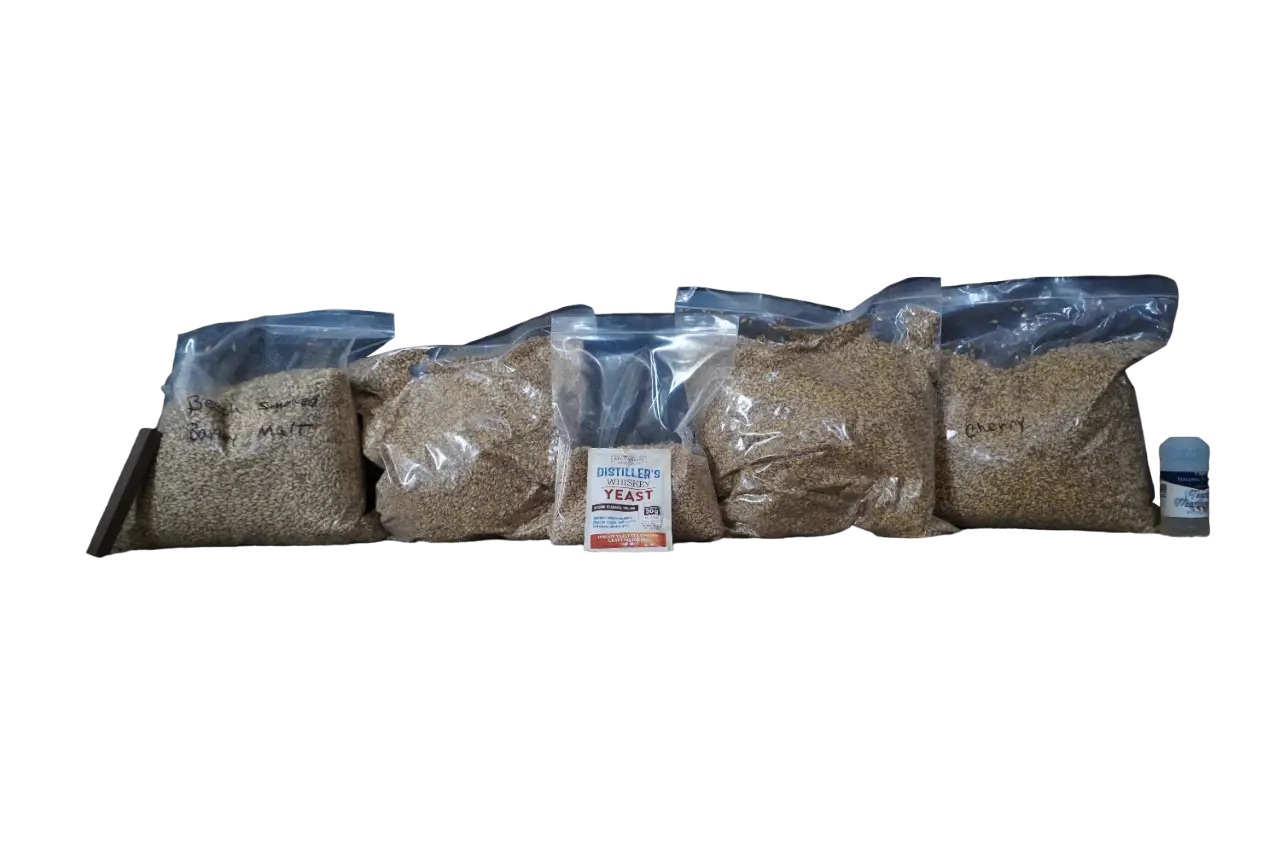
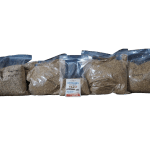
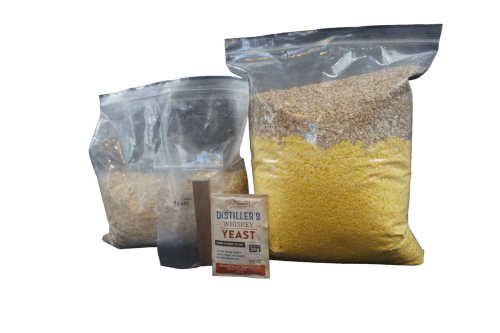
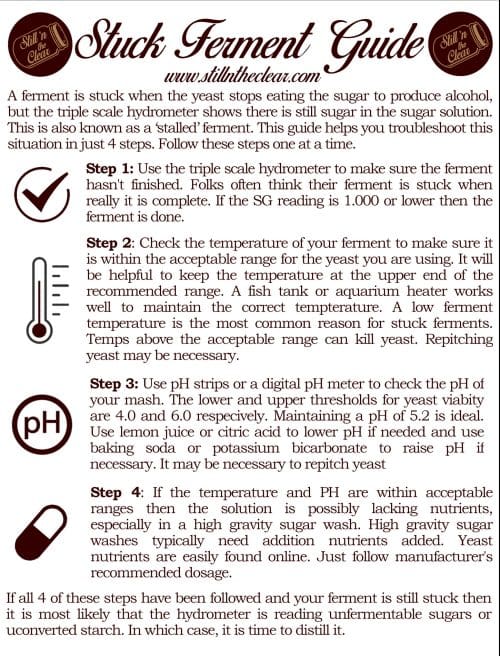
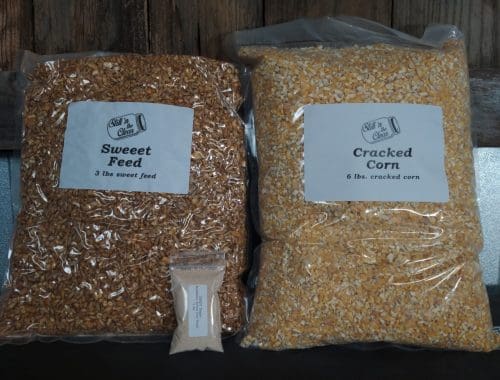
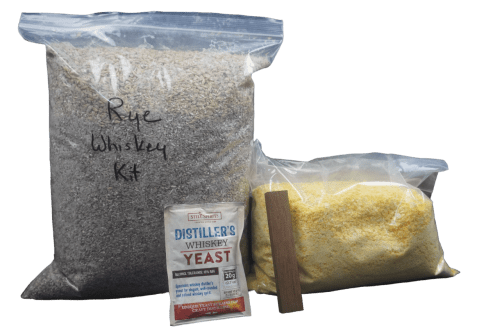
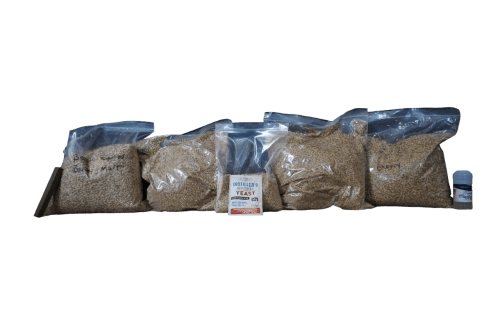
Reviews
There are no reviews yet